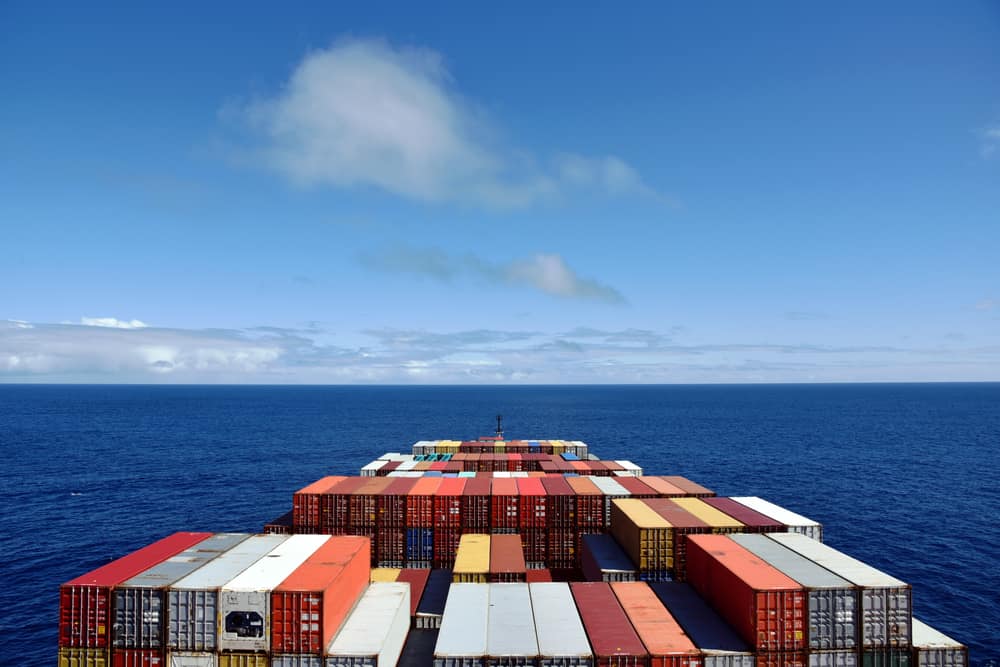Despite the record low levels of equipment availability, space issues, low service reliability, and all-time high freight rates, North American demand for containerized imports continues to break new records, further fueled by the recent $1.9 trillion U.S. federal stimulus package.
When we look at import volumes in 2020 through February, total U.S. imports from Asia rose 17.5 percent to just shy of 12.6 million TEUs compared with the same eight-month period a year prior, including a 27.3 percent year-over-year jump in February.
Data shows equipment shortages, slow container circulation, and congestion-related backlogs in Asia and North America ports could perhaps last much longer than most assume. Cargo owners, carriers, and forwarders are now considering the possibility that things will get worse when the floodgates open, and as the economy picks up with more retailers open and more people vaccinated, we may perhaps experience a much more ruthless version of today’s congestion, space and equipment issues.
The interconnected nature of the shipping industry and the extensive network that containers flow through across the globe means many parts of the world struggle at the same time, because containers stuck in circulatory cycles somewhere in the U.S. never make it on time to be relocated to other destinations, whether it is Europe, Latin America or elsewhere. This impacts many other trades, too.
How this dynamic may affect service levels in the upcoming months is a completely different horror story, because even though the industry is infested with “premium and diamond fees” which are supposed to give shippers some level of peace of mind when it comes to space and equipment, there is nothing “premium” or “diamond” about these new services which carriers claim are superior. So, while poor service levels disrupt strong containerized import demand, the question most cargo owners have in mind is “Are we ever going to see any type of normalization regarding the daunting space, equipment and historical bullish freight market?”
The answer looks complicated because slower container circulation along with severe congestion in seaports and inland rail ramps creates further complications. This causes massive delays, inadequate vessel capacity, and in return, fuels rates to higher levels. That is why in order to be able to control the situation and clear the backlog we see that carriers implemented several immediate rate increases after the Chinese New Year, in February and March and announced further increases in April. These rate increases are quite substantial and in the upcoming months will likely push rates to new record levels for containerized imports.
The slowdown in container circulation was caused by several reasons and unless they are all resolved together, the issues we see today will keep haunting shipping industry for many months to come.
The combined impact of reduced labor productivity, increased demand, and volume surges have been a very bad mix to date and cannot be solved by simply increasing capacity. Over the past several months, many conveniently blamed carriers and their capacity reductions as they match supply to market demand to benefit from high rates. Yet, the issues are more complex than they look. How can carriers increase the supply as their voyages cannot even sail in a timely manner and shippers cannot even find equipment to ship with in the first place. In other words, increased capacity will not solve the issues in the shipping industry unless there is a structural solution to prevent congestion, restore labor productivity, and service reliability to its former optimum levels. Until then, the normal flow of container circulation, capacity, and allocation issues, along with a strong market, will haunt the rest of the 2021.
Perhaps with the increased vaccination efforts across the country, pandemic-driven reduced port/ramp/truck and labor activities can increase again to take care of pent-up demand from the retail and entertainment sector. Time will tell but the future holds many concerns among shipping professionals, and many are afraid that we may have a new reality on our hands.
Is there hope for 2021 that things will be normalized in shipping industry? Not as of Mid-March, but perhaps in the distant future as the economy continues to pick up in the upcoming months we will see our industry adapt to the current struggles and find its way to a new equilibrium and some sense of “normal.”




